
|
||
|
Portland art blog + news + exhibition reviews + galleries + contemporary northwest art
|
||
Bonnie Bronson and Mary Henry 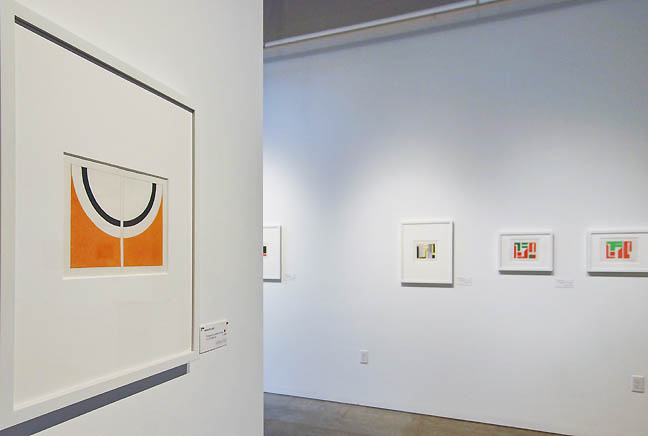 Mary Henry, The Fabric of Space at Jeffrey Thomas Fine Art (all photos Jeff Jahn) For the past decade or so female artists have been a subject to a refocusing of scrutiny in the art world. One critic colleague Jerry Saltz has railed against institutions and a market, which still don't seem to value the the contributions of women. Still, artists like; Helen Frankenthaler, Hilma af Klint, Ruth Asawa, Judy Chicago, Anne Truitt, Kara Walker, Julie Mehretu, Dana Shutz, Wengechi Mutu and Mickalene Thomas have all seen their stars rising and there have been numerous exhibitions not the least of which was the opening exhibition of Hauser Wirth & Schimmel which presented many crucial artists (who happen to be women) both historical and contemporary in one exhibition. Clearly this is a moment, even if market values haven’t kept up... there is momentum and Lee Krasner, Gabrielle Munter, Eileen Gray, and Eva Hesse are starting to get their due. This year, arguably our greatest living Architect died, Zaha Hadid. One should never have to die to be properly recognized, at least Hadid beat those odds. Still, with terms like “mansplaining” feeling extremely valid there is a long way to go. It might not hurt but all of the “female artists” shows still feel like weirdly opportunistic institutional art ghettos. We need to put everyone in the same room and use better language than the old form of art history used in the Twentieth Century. Another corner simply needs to be turned. For example, I do know Clement Greenberg would not have had the same critical potency without Helen Frankenthaler's erudite mind at his side and PAM is the proud owner of perhaps her biggest comment on Clem's circle in Spaced Out Orbit. I was extremely glad to have met Frankenthaler and Anne Truitt at different times but there is something that eats at the dogged historian in me. A sense that a lot of the strongest regional and national level artists who happen to be female have yet to experience that rising tide of awareness of international stars. 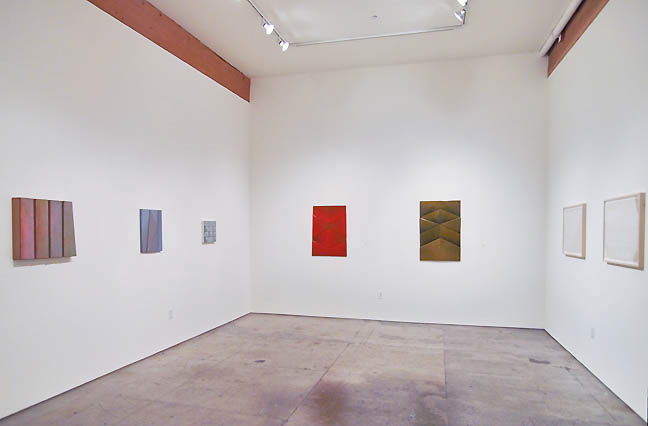 Bonnie Bronson Patterns and Series at Elizabeth Leach Gallery How fortuitous then that two exhibitions by two contemporaries Bonnie Bronson and Mary Henry took place this month. Both are well known in the Northwest, Bronson for her eponymous memorial award that generally favors middle aged female artists and Henry for being an octogenarian who singleminded devoted herself to geometric art with Bauhaus roots irregardless of fashion and trends. It is regrettable that neither is with us now, though I did get a chance to know and meet Mary Henry back when she did a huge mural at The Henry Gallery in Seattle (she joked that with her name on the institution she felt obligated to paint the whole enormous wall and really make it The Mary Henry Gallery). You can read Arcy's excellent interview with Mary Henry here, Of the two Bronson is the most regionally rooted in terms of career and many still see her through the lens of her spouse Lee Kelly and her untimely death. I'd like to concentrate on her work. The small Bonnie Bronson show with longtime gallerist Elizabeth Leach is a treat. 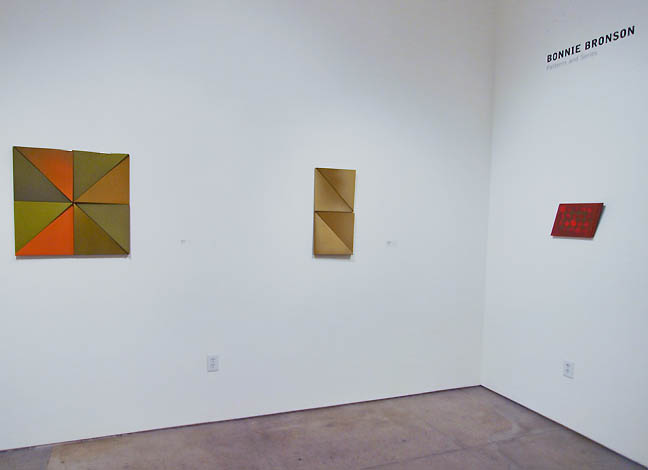
Works like Untitled (green and orange modular) practically scream the 1970's in a way that the tertiary color pairing of avocado green and burnt orange only can. For part of my youth I grew up in a modernist home built in 1970 with counter tops and sinks paired in the same hues but those colors reach deeper than that. There was a sense of experimental self discovery in the early to mid 70's that kinda lost its way later on with disco. But here you see the conglomerate effect of different elements becoming one aggregated whole. It is a theme one constantly see's in Bronson's work, which is also right in keeping with the work Frank Stella and British sculptor Philip King. It is playful and jaunty... echoing Donald Judd's ideas in Specific Objects about not being completely sculpture or painting. 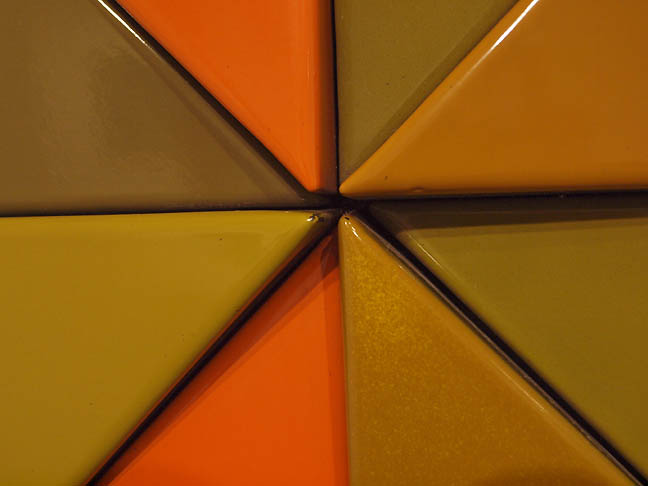 Detail of Untitled (green and orange modular) 1975 But what I like is the way it and others like Untitled (dark green modular) from the year before which seems like a chitinous exoskeleton of some creature. These modulars are a bit like portions of dragon scales without the whimsy and yet all the sense of wonder. This is armor plated art but it doesnt feel militaristic.... they feel like they belong indoors. 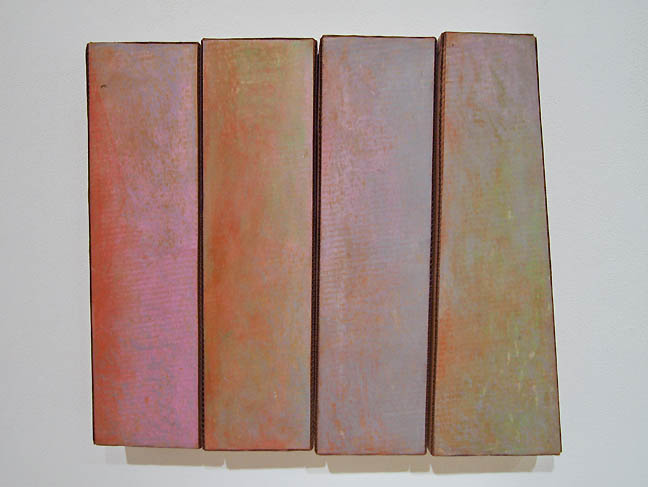 Streak O' Lightning (1978) Other pieces like my favorite, Streak o' Lightning from 1978 are more vulnerable due to its cardboard and pastel construction. Still the gradients and Smithson-like progression are gorgeous and become almost Klee-like musical moments. This is a museum piece as is Untitled (green and orange modular). Others works like Untitled (Nepali waves) and Untitled II and I all on paper also show her skill at delicate yet unfussy abstraction recalling Agnes Martin in both I and II. After visiting Nepal this spiritual dimension became more foregrounded where 1979's Straight Pattern exhibits a similar woven tendency as well as rederences to Smithson's earlier pre-nonsite metal sculpture. Overall, as just a tiny sample it is hard to form a complete view of Bronson's work but I feel its strength is in the way the modular elements or marks swarm and congeal into still porous visual membranes. Let's hope more congeals into larger exhibitions and greater depth of understanding. 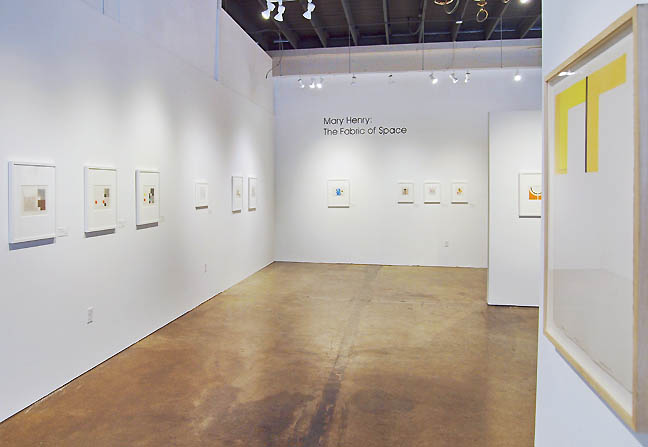 Mary Henry at Jeffrey Thomas Fine Art Across town at Jeffrey Thomas's gallery Mary Henry's more exacting and far harder edged work compared to Bronson's civilized steel the artist demonstrates how she made meticulousness sing. Henry was a promising art student in the Bay Area in the 30's and even worked at drafting precise engineering drawings for Hewlett Packard in the 40's. That didnt last long and Henry went to the Illinois Institute of Design in Chicago to study with the Bauhaus' Laszlo Maholy-Nagy in 1945. She had seen him speak in 1939 in San Francisco and left her daughter to live with her Grandmother (Baba) in California, signaling her priorities of artist over motherhood. Still this was Post WWII and she eventually turned down a teaching opportunity at the Illinois institute (the first ever offered to a woman) to follow her husband's career which took him to Harvard on the G.I Bill and then Arkansas. Her art career went fallow. 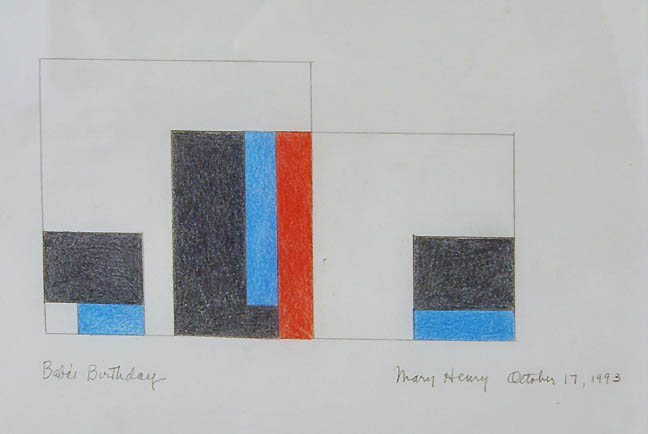 Baba's Brithday 1993 (note all the lines are dead straight, impossible to capture under glass without lens distortion) But in 1964 after traveling Europe alone in the early 60's she divorced her husband and bought “a fixer” Inn in Mendocino, which was becoming an artist enclave. At that time she put her preternatural ability to draw straight clean lines freehand to work on an large and impressive series of drawings, some of which can be found in her latest exhibition The Fabric Of Space at Jeffrey Thomas Fine Art. 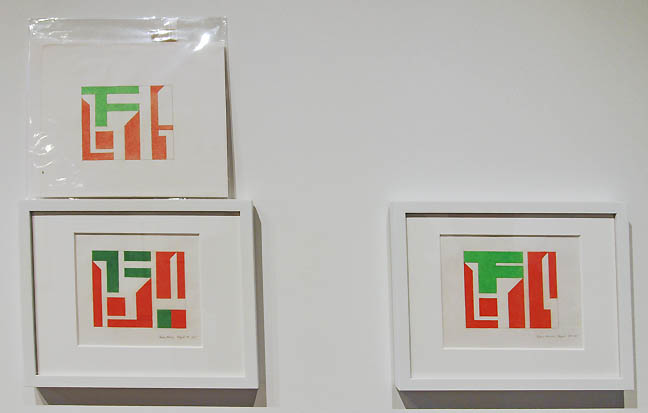 August 1995 series By focusing on the drawings the gallery has done a historical service. Here we see how works in a series from August 1995 work and refine a composition. One volume of green is stockier another utilizes a more washed out green color. The effects are subtle but thrilling. Another series is Visions of Johanna I and II, referencing the Bob Dylan song from Blonde on Blonde. The most obvious difference between the two versions being the thickness of the bar of the black “H”, version II having the sturdier bridge. What does the reference to the song mean? Dylan's lyrics are voyeuristic, describing various amorous people while pining away for someone. There hasnt been that much serious historical work done (Art History Grad students take note) but it could simply have been a song she listened to while drawing the works... they do have that languidly slow mid tempo feel to the Dylan song and it is about isolation, she had a monastic kind of existence for much of her artistic career. Henry herself relished the isolated act of drawing stating, “I was born loving to draw and to notice beauty wherever I found it.” 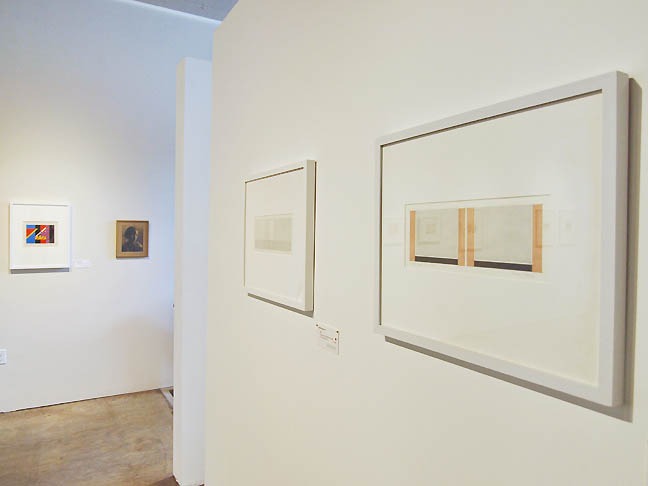 North Slope #6 and #8 (at right) (1975) You can see the solitude in the earliest works in the show North Slope #6 and #8 from 1975. They are the starkest in the show recalling Jo Baer's edge focused work at the same time and a decade ahead of Peter Halley's Neo Geo texture prisons... always hearkening back to the Bauhaus and De Stijl. For Henry geometry in her art wasnt a metaphor it a was state of being. The work doesnt need anthropomorphism to try to humanize/soften it... it is Res Ipsa loquitur. Henry didnt title most of her work for a reason and when she did works like The Color Of Memory were universal impressions and impersonal that are relatable yet abstruse. 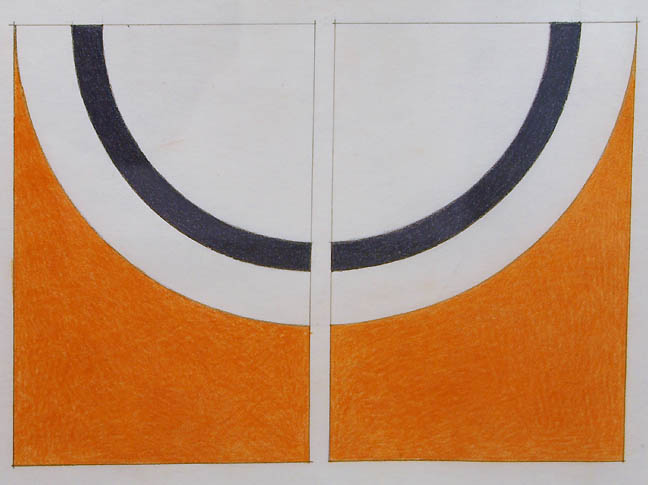 March 25, 1975 My favorite work in the show is March 25, 1975. It is true to her Bauhaus lineage straight out of Klee's Pedagogical Sketchbook and Kandinsky's ideas about point and line but looks nothing like their work. Fields of orange proceed and a shaft of white bisects a series of half circles. It is so simple and precise yet generous. The clarity, like a sunrise... is uplifting with the determination of rising to the challenge of a new day. 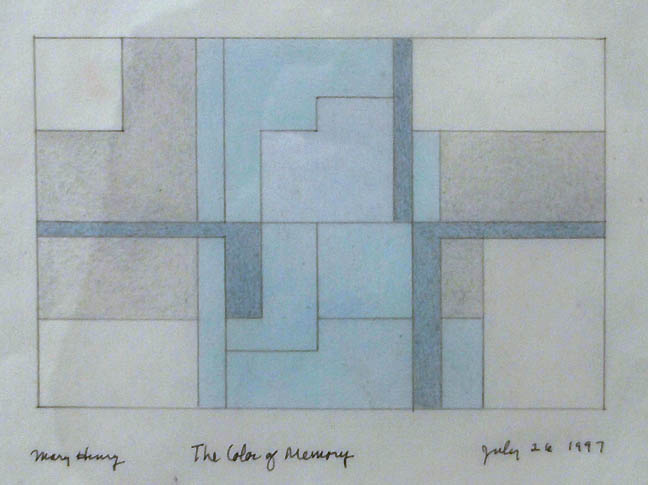 The Color of Memory 1997 (apologies for the reflection) 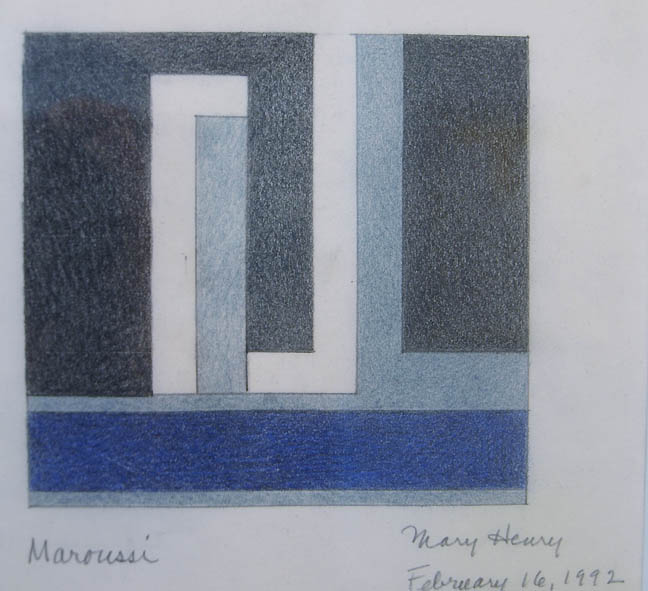 Maroussi (1992) Other highlights are a late painting drawing pair called Among Friends from her Whidbey Island era and Maroussi which probably relates to Henry Miller's masterwork the Colossus of Maroussi, a heady travel account through Greece. I see the blue in this work as vaguely Aegean and the forms reference a classic Greek key pattern... but perhaps it is the breathing quiet vibrancy of the work that makes it so much like reading, yet without obvious letter forms. Henry's drawings create a persistent presence, a companion to the poetically active moments Henry spent making the work. The fact that she iteratively refined them shows just how serious she was about making the pigment stones speak. Her work is making its way into major museums like the Metropolitan and the Art Institute of Chicago and from what Ive seen of un-exhibited work this is just the tip of a very large iceberg. Posted by Jeff Jahn on April 30, 2016 at 12:01 | Comments (0) Comments Post a comment Thanks for signing in, . Now you can comment. (sign out)
(If you haven't left a comment here before, you may need to be approved by
the site owner before your comment will appear. Until then, it won't appear
on the entry. Thanks for waiting.)
|
| s p o n s o r s |
 |
 |
 |
 |
 |
 |
 |
 |
 |
 |
 |
 |
 |
 |
 |
 |

|
Site Design: Jennifer Armbrust | • | Site Development: Philippe Blanc & Katherine Bovee | |

